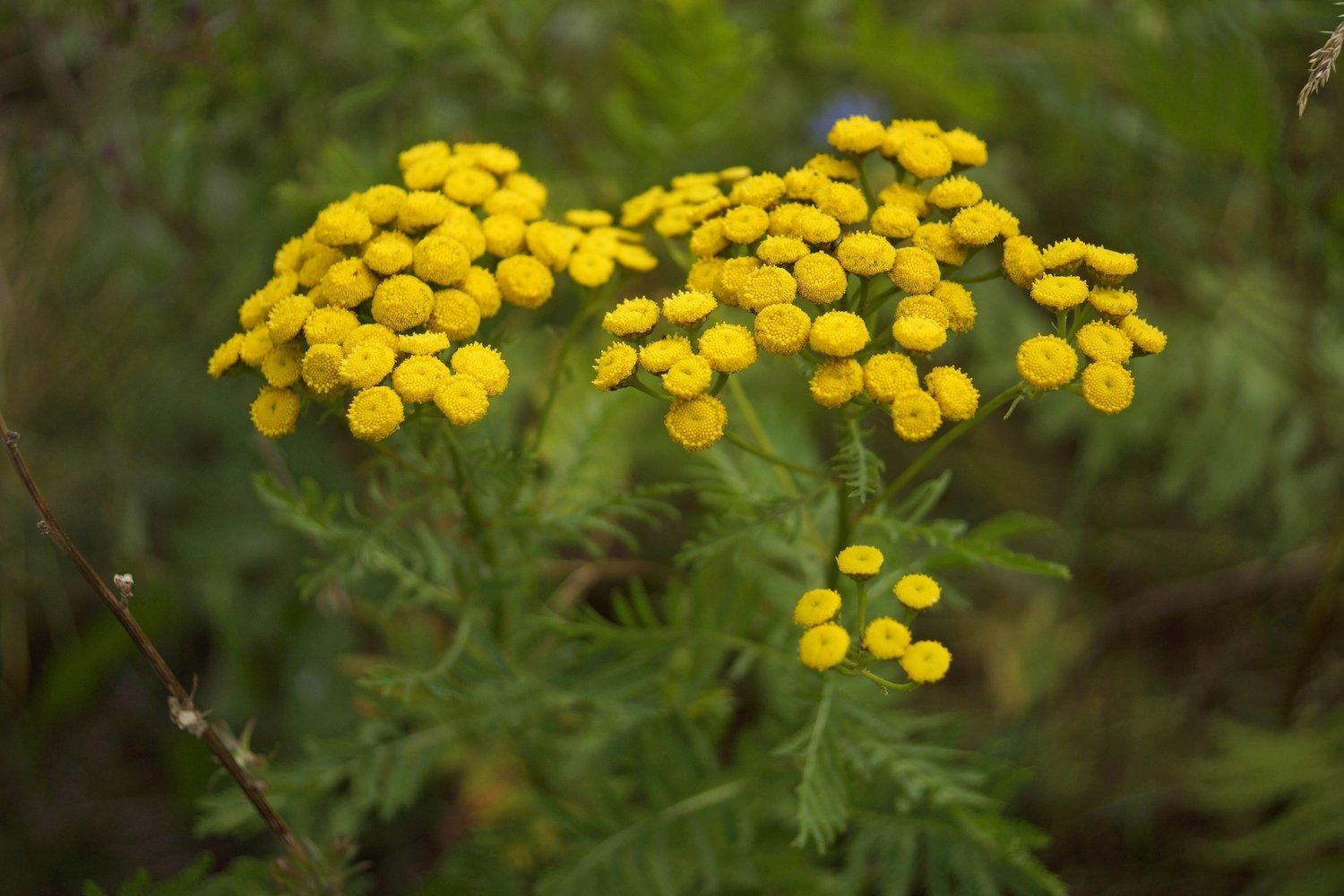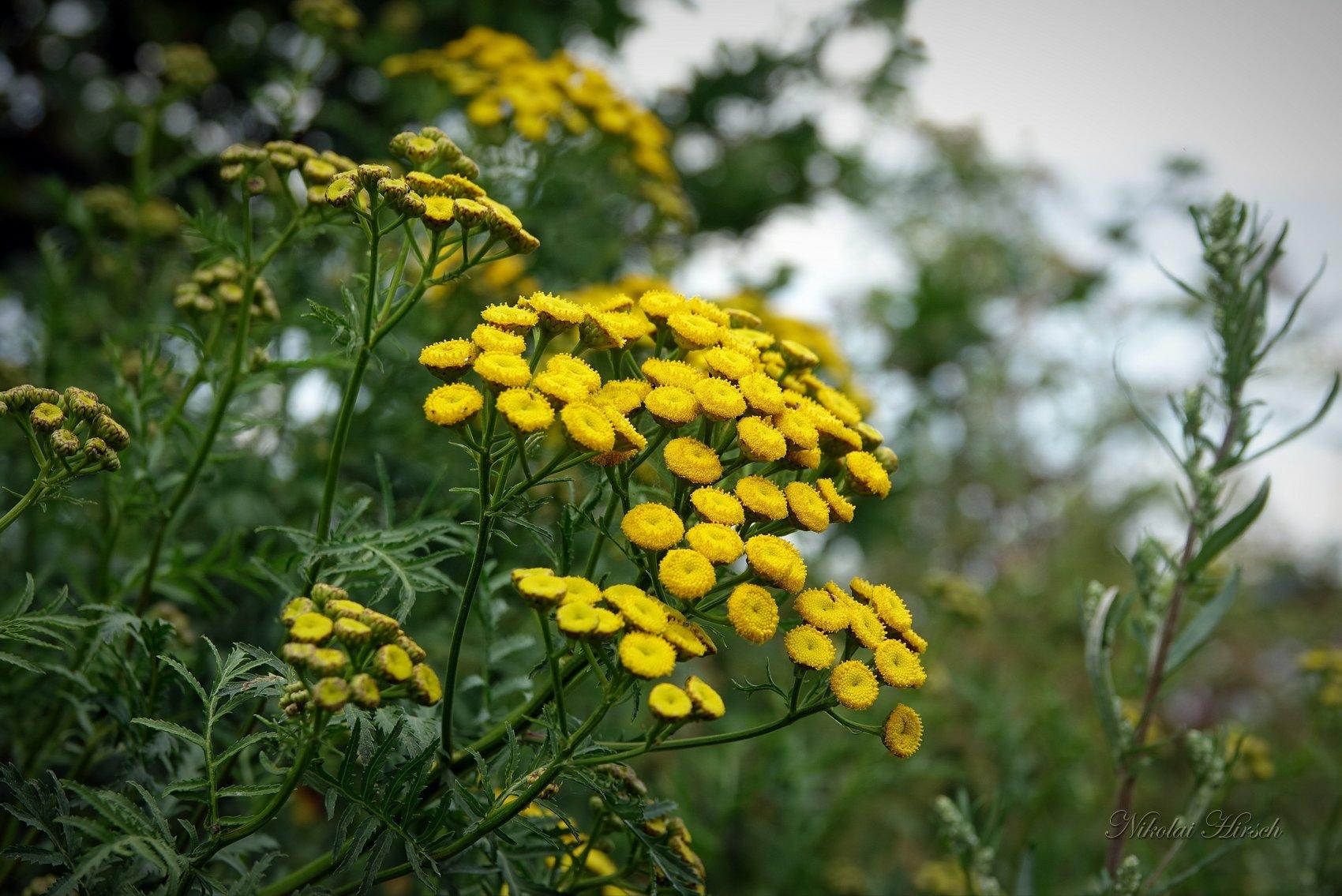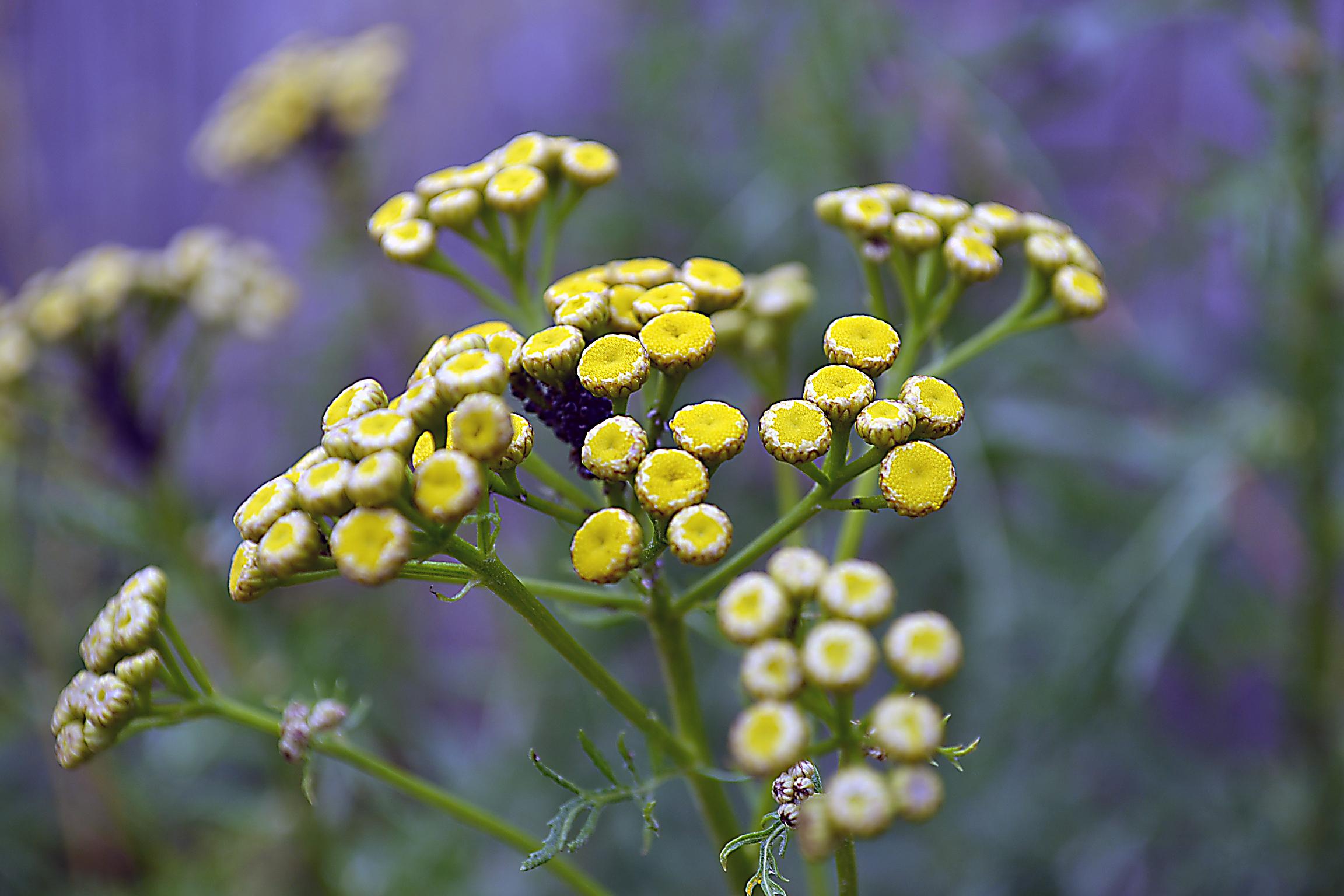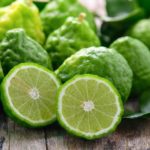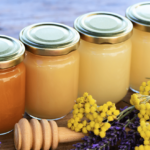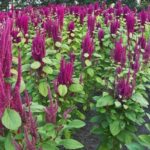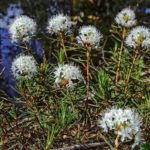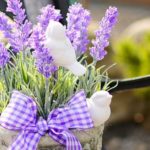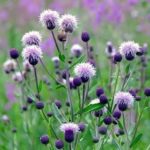Tansy is a perennial plant that belongs to the Asteraceae family. This culture contains a large number of valuable components. Thus, the leaves and baskets of the plant contain essential oils, flavonoids, tannins, alkaloids and much more. At the same time, many people are interested in the description of tansy, its beneficial properties and applications.
Description of the plant
Tansy is considered a member of the Asteraceae family.Botanically, there are almost 120 species of this crop. Of these, at least 30 varieties grow in Russia. In some regions, the plant is called chamomile because of its appearance. The culture is also often called wild rowan, queen plant, and wormweed.
This herbaceous plant resembles a small bush with golden flowers. The decorative appearance of the crop allows it to be used in landscape design. In addition, tansy has a pleasant aroma.
This perennial crop initially forms a straight, rounded stem. After a few years, shoots appear on it, which gradually spread and occupy increasingly larger areas. A six-year-old crop can reach a height of 0.5-1.5 meters. Mature plants have woody stems.
Tansy bushes are characterized by many branches that are covered with long leaves with serrated edges. On top they are distinguished by a dark green color, and on the bottom they have veins and various inclusions.
Tansy blooms in the first half of summer. In June, umbrellas dotted with inflorescences form on the upper fragments of the stems. Each one contains 5-12 small, bright yellow flowers that emit a camphor-like aroma. The flowers are small in size and form a shield on the top of the stem.
Tansy also produces fruits in the form of achenes, which ripen from August to October. They are distinguished by their elongated shape and reach 1.2-1.8 millimeters. The culture began to be used as a food and medicinal plant not so long ago.
Distribution area
The plant grows near roads, on river banks, in the steppes. It is considered quite unpretentious. The seeds can scatter over considerable distances, so tansy often grows on its own.Due to the presence of a strong horizontal root, numerous shoots appear on the bushes, which after some time form dense thickets.
The medicinal plant is found throughout Russia, except the Far North. It can be seen in the Caucasus, Sakhalin, and Altai. Tansy is also found in European countries, Central Asia and North America.
Medicinal properties of the plant
Tansy is a toxic crop. To ensure that it does not cause harm to health and gives the desired result, it is important to consult a doctor before using the herb. Tansy is most often used as an anthelmintic. In gynecology, plant-based products are used to restore the cycle and treat amenorrhea.
Also, the use of culture helps to achieve the following results:
- Improve the digestive system. The active components of tansy help reduce gas formation, which helps with dyspepsia and flatulence. The drug can be used as part of complex therapy for peptic ulcers and gallbladder pathologies. Tansy also perfectly stimulates appetite. It can be used for weight loss and eating disorders.
- Get an antiparasitic effect. Tansy contains a lot of thujone. This substance helps cleanse the intestines of parasites. The anthelmintic effect of the culture helps get rid of hookworms, roundworms, and tapeworms. However, thujone has toxic properties, so it should be used in low dosages.
- Provoke menstrual bleeding. Tansy helps stimulate menstruation. Compositions based on it are used to normalize the cycle. However, it is strictly prohibited to use the substance by pregnant women, as it can cause miscarriage.
- Prevent the formation of kidney stones. Consuming tansy in combination with nettle helps prevent the formation of kidney stones. To do this, it is recommended to drink tea from these plants several times during the day in small portions.
- Improve joint health. With external and internal use of tansy, it is possible to get rid of signs of the musculoskeletal system. With its help you can cope with rheumatism and arthritis. Compresses help alleviate inflammation during sprains and exacerbation of gout.
- Get an antibacterial effect. The essential oil of the culture helps get rid of even those pathogens that are resistant to high temperatures and antibiotics. Essential oil should be used in small doses.
- Suppress the spread of fungal microorganisms. To do this, the affected areas of the dermis need to be treated with the essential oil of the culture.
- Reduce signs of inflammation. Tansy essential oil has pronounced anti-inflammatory properties. It affects the skin, respiratory and digestive organs.
- Suppress allergy symptoms. The severity of such reactions depends on the level of histamine in the body. To control allergies, you should use tansy essential oil. It has antihistamine and neutralizing properties.
- Get an antiviral effect. Tansy includes thujone and camphor, which are effective against viruses.
- Normalize body temperature. The plant suppresses the spread of pathogens, which helps relieve fever.
- Stimulate the functioning of endocrine organs. There are studies that say that tansy has a beneficial effect on the production of hormones of the thymus and thyroid glands. The development of the body depends on this.
- Cope with nervous disorders.The essential oil of the culture has calming properties and normalizes the functioning of the nervous system.
- Get an insecticidal effect. The plant helps cope with mosquitoes, lice, and fleas.
Chemical composition
The flowers and leaves of the plant contain essential oil. Its main components are ketones - in particular, camphor and thujone. The product also includes borneol, pinene, bicyclic sesquiterpene unsaturated dioxylactone tanacetin. Interestingly, ketone levels are affected by the crop's growth zone. Their content can range from 0 to 61%.
Tansy inflorescences include alkaloids, protein elements, and polysaccharides. They also contain organic acids, bitter and tannins, vitamins, and oxyflavonone glycoside. The culture is capable of accumulating manganese.
Instructions for use
Pharmacies offer a large number of tansy-based medications. They are distinguished by anthelmintic and choleretic properties. The essential oil is present in the flowers of the plant. It is used for the preparation of antiparasitic agents. Tansy is also used to reduce the mucus content in bile.
What is tansy used for?
The plant is traditionally used to eliminate the following conditions:
- ascariasis;
- enterobiasis;
- biliary dyskinesia;
- chronic noncalculous cholecystitis.
Cooking instructions
In some countries, tansy is officially used to combat a number of pathologies. It has analgesic, anti-inflammatory and antipyretic properties. Extracts of the culture are prescribed for angina pectoris, headaches and helminthic infestations. It is important to use the products correctly.
Decoction
This substance is recommended for use in cases of stomach dysfunction, gastritis with low acidity and diarrhea.To prepare the composition, you need to take 2 tablespoons of dried flowers and add 1 liter of hot water. It is recommended to leave the broth for 4 hours and then strain. The finished product should be drunk three times a day. This should be done a quarter of an hour before meals, 100 milliliters.
For external use
External use of the plant involves applying lotions and compresses. The culture can also be used for rinsing and douching. To make a composition for external use, it is recommended to take 1 tablespoon of dried flowers, add 250 milliliters of boiling water and place in a water bath for 5 minutes. Then the liquid should be filtered, cooled and used for compresses.
The composition helps cope with swelling, inflammation, arthritis, and bruises. Douching should be done for vaginitis and colpitis. If a person has tonsillitis or stomatitis, it is worth gargling or gargling.
Application of the plant
The healing properties of tansy are confirmed by medicine. Doctors prescribe culture-based products as choleretic compounds and to combat worms. It is permissible to use the herb in different forms - in the form of decoctions, lotions, enemas, baths, infusions.
Tansy is the active substance of the drug tanacechol, which is a dry purified extract of the flowers of the plant. This medicine is prescribed to adult patients for biliary dyskinesia, gastritis, colitis, stomach ulcers, chronic noncalculous cholecystitis, and dysentery. The product has antispasmodic and choleretic properties.
A decoction of tansy flowers helps increase secretion.It leads to the separation of bile, increases stomach acidity, stimulates appetite and digestive functions, eliminates pain and swelling. The composition can be used for hepatitis and disorders of the digestive system. Remedies from the fruits and flowers of the plant are used as soothing compounds for aches and pains that accompany rheumatism. They can also be used for nervous exhaustion, headaches, hypochondria, and epilepsy.
Compresses based on the fruits and flowers of the plant are recommended to be applied to purulent wounds, ulcers, and bruises. They also help reduce pain and inflammation during sprains and bruises. Baths from the decoction are used to treat rheumatism and gout. Ointments based on infusion are used for bee stings and dermatological pathologies.
In gynecology, the composition should be used in case of cessation or decrease in the volume of menstruation. The substance is used externally for skin care. Tansy can be used for washing hair in case of lice and seborrhea.
The flower baskets of the crop have pronounced anthelmintic properties. The plant effectively destroys roundworms, lamblia and pinworms. To cope with helminths, you can use teas, infusions, enemas and decoctions.
Negative properties of tansy
Tansy is considered a rather insidious plant. It contains organic toxins, which can cause poisoning if used incorrectly. The main contraindications to the use of the herb include the following:
- Pregnancy – the plant causes contraction of the smooth muscles of the uterus and can cause miscarriage or premature birth.
- Lactation - toxins that enter the baby’s body through mother’s milk can cause severe poisoning.
- Children under 12 years of age - in this case, tansy can only be used externally. The fact is that choosing a safe dosage of a plant for a child can be quite difficult.
- Arterial hypertension - culture provokes an increase in blood pressure and heart rate.
To ensure that the content of thujone in the body does not exceed the safe dosage, the duration of therapy should not be more than a week. Then you should stop for a month and repeat the treatment again.
Tansy is a fairly common crop that contains many valuable components and has a beneficial effect on the body. In order for the use of a substance to have an effect and not lead to negative consequences, it is necessary to strictly follow the rules for its use.

